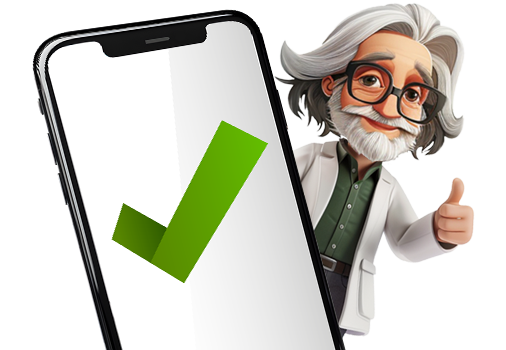NestForms has released a brand spanking new feature - welcome to Public Forms! Being able to provide Public Forms within NestForms is a game-changer when it comes to data collection.
Due to popular demand, we have been asked by many clients to support Public Forms along with our mobile app offering. The NestForms development team, as always, have been beavering away to bring all kinds of new and requested features to the platform. The Public Forms addition will allow you to benefit by adding another layer to your data collection process!
This can be used by either clients or any public users outside your usual app based respondents allowing them to fill in simple forms that may not require the NestForms mobile app nor the NestForms account.
What is a Public Form?
Public forms that are accessible through a web URL offer powerful convenience and ease of use for individuals and organisations. By providing a direct online access point, these forms eliminate the need for physical paperwork. Of course, the great thing also is that, by using Public Forms you don’t always need to use the mobile app and can make your form available to the general public as opposed to NestForms app responders only.
Lifes a lot easier when people can complete forms from the comfort of their own workstation desktops or other appropriate locations. The feature also offers instant form retrieval while working on the move by scanning a QR or Barcode.
Whether it's a site report, vehicle check, customer feedback survey or event registration, having public forms accessible through a web URL allows users to access and complete at their own convenience from anywhere while online.
NestForms Public Forms allow you to gather information quickly and efficiently, but not only that, by using the feature you can set date restrictions for form completion and limit the amount of responses. There's more - you can limit the number of responses by the day, hour and by IP address or Browser. Read on and see how this powerful new feature can assist with data collection in your daily business operations.
Understanding Public Forms, Their Importance and use within your Business
Using the NestForms components you can create forms that are highly customisable, allowing you to tailor the component fields to suit your specific needs. Additionally, you can give the responder options to add Images, audio recordings or GPS location to your forms. From Dropdown, Single and Multiple answer questions to Signature sign-off, once you make your form public to a target audience you have full control over the type of data they collect. You can soup up your public form by embedding images to your questions making the survey experience more transparent and effective on the eye.
Unlike traditional mobile forms that are limited to a specific audience, public forms can be accessed by anyone at a desktop computer, smartphone or tablet. All they need is to link to a URL that is provided as soon as you enable this Advanced settings within the NestForms platform. This will open up the form and they can get started in the blink of an eye!
With NestForms, you can create public forms that adapt to any screen size, ensuring a seamless user experience across devices. Whether someone is accessing your form on a desktop computer or a smartphone, they'll have no trouble navigating and completing the form. This accessibility is crucial for maximising response rates and ensuring a positive user experience.
Benefits of using Public Forms for data Collection
The benefits of using Public forms for eclectic data collection are numerous. Firstly, they save the business time and effort. Public forms also provide the ability for people to complete survey forms outside of the app at their work stations. By linking the Public Form URL to QR codes, your Public Forms can also be accessed in the field with an Android or iOS smart device.
Furthermore, Public Forms on NestForms are cost-effective. Printing and distributing paper forms can be expensive, not to mention the environmental impact. By going digital and using public forms within the platform, you save on printing costs and reduce your carbon footprint. Additionally, with Public forms, you can customise limitations on the number of respondents. Whether you have 10 or 10,000 people filling out your form, NestForms can handle it!.
Another significant advantage of using public forms is the real-time data collection and analysis. With NestForms, you can monitor responses as they come in. With NestForms you can set up Triggers meaning that you will receive automated response notifications as forms (or groups of forms) are submitted by your target audience.
This data-driven approach enables you to identify trends, spot opportunities, and address issues promptly. By making full use of public forms you can gain data insight in real-time or at a pace you can control through set limits. You can stay ahead of the competition and make data-driven decisions that drive your business forward.
How to Create Public Forms on NestForms
Creating public forms on NestForms is a straightforward process that doesn't require any technical expertise. To get started, simply sign up for a NestForms account. You can test public forms within the NestForms free trial which includes all of the features. Once you're logged in and have created a new form you can enable the public form option through the Advanced settings dropdown menu.
Let's have a closer look the steps:
Form creation: The form is created using the NestForms form builder. The administrator specifies the component fields, questions and any other required information. These typically include text fields, checkboxes, dropdown menus, and much more. Select the form fields that are relevant to your data collection needs and arrange them in the desired order. You can also customise the appearance of your form by adding your logo, changing the colour scheme, and selecting a theme. After you've designed your form, it's time to share it with the world, well… maybe just a select group.
- Settings: In the Form Builder, within Advanced Settings, click to Public Form. A URL (website address) is assigned to the form, allowing access to it via the user's browser.
- Distribution: The form's URL is shared with the intended audience, such as on a website, via email, via barcode or QR code or through social media. Users can simply click on the URL to access the form.
- User Interaction: Without the need for the app users can fill in the fields by typing in the required information or selecting options from dropdown menus, checkboxes, etc.
- Data Submission: After users complete the form, they click the Finish button. The form data, including the responses, is securely transmitted to the NestForms server.
As mentioned earlier there are multiple ways to distribute your public forms. You can share them via email, social media, QR codes, or embed them on your website. This flexibility allows you to reach a specific audience and maximise response rates. Once responses start coming in, NestForms can automatically collate data and present it for you in a clear and organised manner. Here's a couple of eye watering existing features to make your Public form shine!
Customising Public Forms for Your Brand, why it matters!
One of the standout features of NestForms is the ability to customise public forms to align with your brand identity. By adding your company logo, choosing your brand colours, and selecting a theme that reflects your brand personality, you can create a cohesive and professional-looking form that resonates with respondents at their desks or in the field.
Use Skip Logic within your Public form
Customisation goes beyond aesthetics. NestForms allows you to add Skip logic to your public forms, making them more dynamic and tailored to each responders needs. For example, if a responder selects a specific answer, you can show or hide certain form fields based on their answer, they can skip to a specific section of the form, bypassing irrelevant questions.

Promoting Your Public Forms
Creating a public form, generating the URL, setting limits and restrictions is just the first step. To maximise its reach and response rates, you need to promote it effectively.
One of the simplest ways to promote your public forms is through social media. Share the link to your form on your organisation's social media profiles, encouraging followers to participate. You can also leverage social media advertising to target specific demographics and reach a wider audience.
Another effective promotion strategy is email marketing. If you have an existing email list, send out a newsletter or dedicated email highlighting your public form. Provide a brief description of the form's purpose and why respondents should participate. Make sure to include a clear call-to-action and a direct link to the form.
QR codes are another powerful tool for promoting your public forms. By displaying QR codes on posters, flyers, or other marketing materials, you make it easy for people to access your form with a simple scan. QR codes can be placed in physical locations such as events, stores, or offices, as well as in digital spaces like websites or email signatures. Barcodes are useful for warehouse, inventory and for sharing forms for all kinds of audit, checklist, or inspections. For example, a piece of kit in a warehouse or factory might have a barcode sticker attached where an inspection form can be accessed for service checks or damage assessment.
Collecting and Analysing Data from Public Forms
Once your public form is live and responses start pouring in, NestForms makes it easy to collect and analyse the data. All responses are stored in one central location, allowing you to view and manage them effortlessly.
NestForms offers a range of data export options, including CSV, Excel, and Google Sheets. Exporting your data in these formats makes it easy to analyse and visualise the results.
In addition to the many Exporting options, NestForms also provides built-in data analysis tools. These tools allow you to filter and sort responses based on specific criteria, making it easier to identify patterns and trends. You can also create custom calculations on your data within the platform, saving you time and effort.
Other Features and Integrations for Public Forms
NestForms offers a range of advanced features and integrations to enhance the functionality of your public forms. Another powerful feature is the ability to capture media-rich responses. With NestForms, respondents can attach images and audio recordings to their form submissions. This allows for more detailed and comprehensive data collection, especially in scenarios where visual or auditory evidence is required.
Integrations with other tools and software are also available. NestForms can be seamlessly integrated with popular CRM systems, project management tools, and data analysis platforms. This integration streamlines your workflow and ensures that data collected through public forms is automatically synced with your existing systems.

Real-Life Examples of Public Forms in Action
To truly understand the power of public forms on the NestForms mobile app, let's explore some real-life examples. These examples demonstrate how different organisations and individuals have leveraged public forms to streamline their data collection processes and achieve their business targets.
- Event Registration
Let's say you are hosting a conference or event where attendees need to register. Each attendee receives a unique barcode on their event ticket or registration confirmation. When they arrive at the event, the barcode is scanned using a barcode scanner or a mobile app. The scanned barcode would link directly to a public form where attendees can fill out additional information like their name, contact details, dietary preferences, etc.
An event organiser was looking for a way to streamline the registration process for their annual conference. By creating a public form on NestForms, they eliminated the need for paper registration forms. Attendees could simply fill out the form on their smartphones, saving time and reducing errors. The real-time data collection and analysis features allowed the organiser to monitor registration numbers and make informed decisions regarding event logistics. The seamless integration with their CRM system ensured that attendee information was automatically synced and updated, simplifying post-event follow-ups. - Damage Assessment
Instead of asking an inspector to manually fill out a lengthy paper form, barcodes can be allocated to any items, pieces of machinery or furniture. Accident inspectors can simply scan the barcode using their smartphone, which would lead them to a public form to inspect for safety or damage. - Warehouse Inventory Management
Imagine a warehouse that stores various products, each with a unique barcode. Whenever a worker has located a specific item, they can scan its barcode using a smartphone or tablet. This is connected to a form where they can input package or item details which when Finished and submitted, any data collected is connected to a software system that instantly retrieves information about the item, such as its location in the warehouse, available stock, and other relevant details.
In this scenario, the barcode acts as a unique identifier that links to a digital record within the warehouse management system. If the worker needs to report any issues with the item, such as damage or expiration, they can also scan a separate barcode associated with a quality control form. This barcode would link to a public form where they can input the necessary information to initiate a quality control inspection process. This way, the barcode serves as a direct link between the physical item and the digital form. - Market Research Company
A market research company was struggling to collect data from a diverse range of respondents. By using public forms on NestForms, they were able to reach a wider audience and gather valuable insights. The ability to customise the forms to suit each research project allowed them to collect targeted and relevant data. This data-driven approach enabled the company to provide more accurate and effective research reports to their clients, leading to increased customer satisfaction and repeat business.
Conclusion
The Public forms feature on the NestForms mobile form app platform is a powerful tool for efficient data collection. Whether you're a business owner, researcher, or event organiser, the ability to create and share public forms with ease will transform the way you gather information. From conducting surveys and collecting feedback to organising events and registering participants, NestForms as usual simplifies the entire process, saving you time, effort, and resources.
By understanding the benefits of public forms and learning how to create, customise, promote, and analyse them, you can unlock the full potential of the NestForms platform. The real-life success stories demonstrate the impact that public forms can have on streamlining workflows, improving decision-making, initiating inspections, assessments and enhancing customer satisfaction.
So, why wait? Join the countless individuals and organisations already harnessing the magic of public forms on the NestForms mobile form app. Experience the future of form management and elevate your data collection to new heights. The possibilities are endless!
With the NestForms Land Survey App we provide a complete set of help pages to assist you navigate around the platform. On these pages you can see more detailed information about the many various features and modules.
If you are new to NestForms, there is a page dedicated to the terminology used within the platform. Start your journey there and then begin creating and sharing your first form. Remember! You can try the Public forms feature within your free two week trial.
Our free trial period includes all of the features and modules within the optimum Premium subscription plan.






